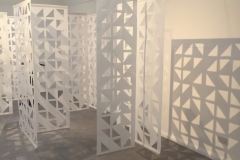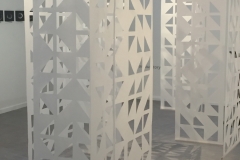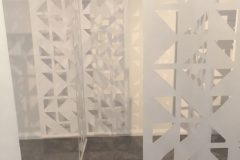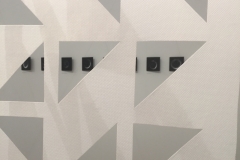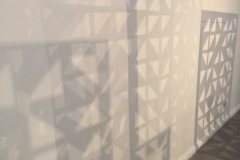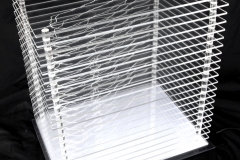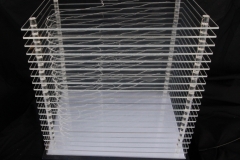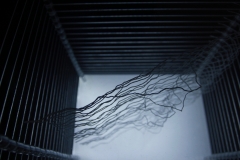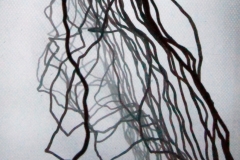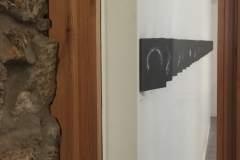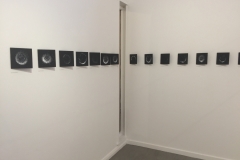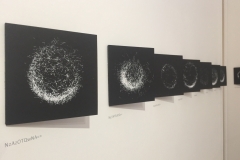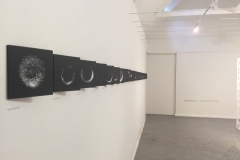ambulatory
n: a covered space for walking in a monastery
a: formed for walking; moving about; movable
The ambulatory exhibition runs from 12 January to 23 February 2019 at Taigh Chearsabhagh Museum and Arts Centre, Lochmaddy
The exhibition comprises:
- the path your feet will never travel again: 20 days, 20 tracks, Perspex and ink When stacked chronologically, the patterns of the tracks create a 3D perspective on time and place
- kinaesthesia: 35 days, 35 movement drawings, ink on card. A device carried in a backpack enabled the walks to also be recorded as a series of line drawings which reflect the physical experience of the walks.
- suspended duration: 14 days, 14 time patterns, Spunbond building paper. Discovering a book written in 1722 by a French monk about creating different combinations of 2D shapes – an early binary code – enabled the development of a personal visual language to interpret the URL codes. Suspended panels using the coded language and arranged in chronological order provide a cave-like space to experience the passing of time.
- almanac: 114 days, 30 pages, ink and photography on card. A book mirroring the profile of Eaval and the personal visual code provides signposts to the development of the thinking behind the work
If you are interested in purchasing any of the works on display, please contact Jean via her website: www.jeannewmanart.com
Jean Newman lives on the Isle of Grimsay, North Uist, and took the opportunity afforded by living on Uist to take the NC in Art and Design at Taigh Chearsabhagh in 2012, moving on to the first two years of a BA in Fine Art with Lews Castle College, UHI, also at Taigh Chearsabhagh. Jean then completed the final two years as a remote student at Moray School of Art UHI in Elgin, graduating in 2018 with a First Class Honours Degree in Fine Art.
Jean’s work seeks to invite curiosity and encourage a questioning of our understanding of time, continuity and place. Her work uses a range of materials, sometimes sourced from the local environment, as well as walking in the Uist landscape as a creative practice, providing a mechanism for both creative thinking and the collection of temporal information. Repetition infers time passing and mindful contemplation of the continuity between the ancient past and our uncertain present, the resultant works echoing the ephemerality of our tenure of the world.
